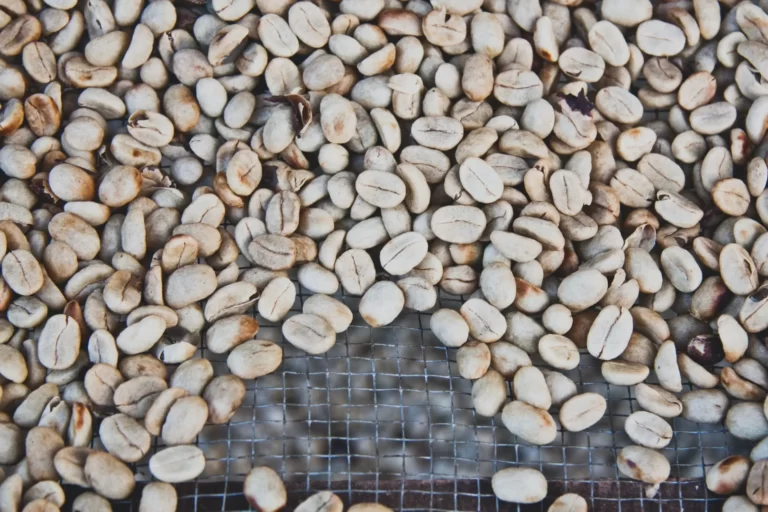White coffee is one of the coffee trends that became popular unexpectedly but was welcome in the coffee industry anyways. But this trend has even many coffee lovers thinking about multiple things:
- What is white coffee?
- Where does it come from? And what makes it white?
- How to make white coffee?
- How’s the caffeine count?
Fear not, for all your questions will be answered today. Today, we discuss everything about white coffee that you should know, so you can determine if this is what you want for your next morning’s refreshment.
What is White Coffee?
You can create white coffee by roasting regular coffee beans halfway at a lower temperature.

When you roast coffee at a lower temperature, you ensure that less caffeine content gets extracted when roasting. The aftermath is a coffee with a nutty yet sweet flavor profile, which is different from traditional coffee.
Where Does White Coffee Come From?
The origin of white coffee is the same as traditional coffee since traditional beans are used to roast and produce it.
There’s a common mixup of white coffee with Malaysian white coffee. It’s a coffee drink made by roasting coffee beans with margarine. Then, the roasted beans are mixed with sweetened condensed milk in a cup to create the final product.
Our subject matter, the white coffee, originated in The United States a long time ago, though it became a well sought-after experience just recently.
It has been around for almost 50 years now. But the trend didn’t kick in till 2015 when people were desperately looking for a coffee drink that could work as a base ground for lattes that are less bitter but have a strong caffeine kick.
A few studies showed that white coffee is the nearest best choice since it carries more healthy antioxidants. How so? The roasting process is so mild that it leaves many antioxidants inside the beans, opposed to traditionally roasted coffee.
With the proven health benefit, sales started to take off, and suddenly, a large audience was ready to welcome a new type of coffee in the coffee market.
Fast forward to 2022, and white coffee is finely established in the coffee market.
Types Of Coffee Known As White Coffee
Now that you know about white coffee, you must also know about the types of it. The four famous coffees are:
- Malaysian White Coffee
- Ipoh White
- Indonesian Kopi Putih
- Flat White
White Coffee vs. Black Coffee
When we’re comparing white coffee vs. black coffee, there are different factors like roasting temperature, caffeine levels, and flavor that we need to consider.
Roasting Method
Both start with the same green coffee beans, but white coffee retains up to 50% more caffeine than black coffee with a darker roast because it is roasted to a lower temperature. It also retains more healthy antioxidants because it is roasted to a much lower temperature and light roast than traditional fully roasted coffee.
Flavor Profile
The flavor profile is what sets it apart from traditional black coffee. While black coffee has a strong, somewhat bitter taste, it is more sweet tea with a nutty flavor.
Grind Technique
Since white coffee beans aren’t roasted all the way, it’s really tough to grind them on a default setting home grinder. On the other hand, Black coffee can easily be ground with almost any grinder.
Caffeine Levels
White coffee wins in terms of caffeine levels since it has 50% more caffeine than traditional, fully-roasted coffee. But how?

When coffee beans are roasted at a lower temperature, and for half the time, all the caffeine present in the beans aren’t entirely roasted out, so it has higher caffeine levels when introduced to hot water.
Brewing Method
Your brewing method and amount of usage will cause the amount of caffeine to differ in the final cup of coffee.
It looks different from regular coffee when you put it through your home brewer. At first, it looks more translucent and watery. But if you put it through a pour-over for a second time, you can get a denser version of a less dark coffee.
Pro Tip: If deep coffee flavor and aroma are your regular go-to, use a few grams of ground coffee with your white coffee dosage.
Flavor Profiles
There is no hard and fast rule to tell a coffee’s taste because every country has its peculiar blend to make the white coffee. So, it is better to guess the taste of the it by relating it to its origin country.
For instance, Indonesia and Sumatra beans are known for their aroma, while the beans from Brazil and Colombia have a very nutty and milder taste.
Having fun Nomies? Check out our piece on pour-over coffee.
How To Make White Coffee At Home?
The best way to homebrew white coffee is via an espresso machine. Espresso coffee maker provides you with a strong coffee cup with the complex flavors of a nutty tea.
Roasting your beans to get white coffee is a lot different than roasting regular coffee since your goal is entirely different.
You’re trying to get a low roasted bean on a lower temperature than isn’t roasted all the way but roasted just enough to taste like coffee and not as grease.

Traditional coffee starts roasting when the temperature reaches the 420 degrees mark, and the reactions occur between 420-465 degrees. But for white coffee, the temperature is even lower, around 325 degrees.
When roasting for white coffee, you don’t want to turn up the temperature all the way. The trick is slowly bringing the temperature to the ideal limit to bring out all the right essence and flavor profile.
Roasting at this low-end temperature prevents chemical reactions and the extraction of caffeine from the beans. So the coffee has the desired nutty-sweet essence while packing a bigger caffeine punch than usual.
You can use it to even create a multi-serve coffee mixture. Just hold on to the coffee mix dilute in hot water to create multiple cups. Don’t worry; the process doesn’t take away from the original condition of the coffee itself. The deep coffee aroma and the taste are all there.
Benefits:
The trendy drink comes with its fair share of benefits. Here are the main benefits of white coffee:
- It contains 50% more caffeine than traditional, full-roasted coffee.
- The flavor profile is more detailed than the traditional bitterness of black coffee.
- It is less acidic than traditional coffee.
- It contains more antioxidants, such as chlorogenic acid, that can help the body.
Side-Effects:
Drinking coffee more than it’s recommended is never good for you, and white coffee is no exception to it either. It has its own fair share of negative side effects, including:
- Excessive consumption of white coffee can increase blood pressure drastically.
- Just like regular coffee, drinking more than the safe limit (400mg of caffeine per day) can cause severe health complications.
- It’s better to avoid it if you have acid reflux issues, as it can cause heartburn after consumption.
- Regular consumption changes the compositions of your blood, going as far as changing your metabolism rate. This can result in palpitations.
- Due to the ability to make cellular level changes in the human body, white coffee is strictly prohibited for pregnant women for the safety of the fetus inside them.
Had fun reading? You’ll love to read our piece on brown sugar in coffee.
Bottom Line
With the unique characteristics, it’s safe to say that white coffee should have its own category. The promise of higher caffeine count, more antioxidants, and better caffeine punch easily overshadow the few easily avoidable negative effects.
Though no one knows who tried to roast coffee at such a low temperature. Maybe a coffee lover just wanted to create a unique coffee experience. Or you could say he was lazy.
FAQs
It has a nutty, tea-like taste with additional sweetness. A lesser roast ensures extra sweetening compounds stay inside the bean.
It contains a higher caffeine count while maintaining a sweet flavor. It also contains more helpful antioxidants than usual.
The core difference between white and black coffee is in the roasting methods and the caffeine level present in both coffee types. It has a higher amount of caffeine, but it’s less roasted than a traditional dark roast, regular black coffee.
It comes from roasting traditional beans at a lower temperature and shorter time. So there are not any specific beans. Regular coffee beans that usually grow along the coffee bean belt can make white coffee.
It is originated in the United States.
No, flat white coffee is not the same as white coffee. These are two separate coffee drinks.

